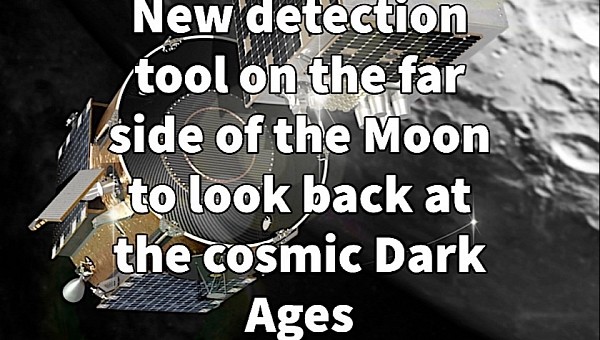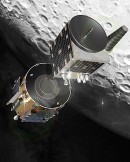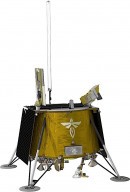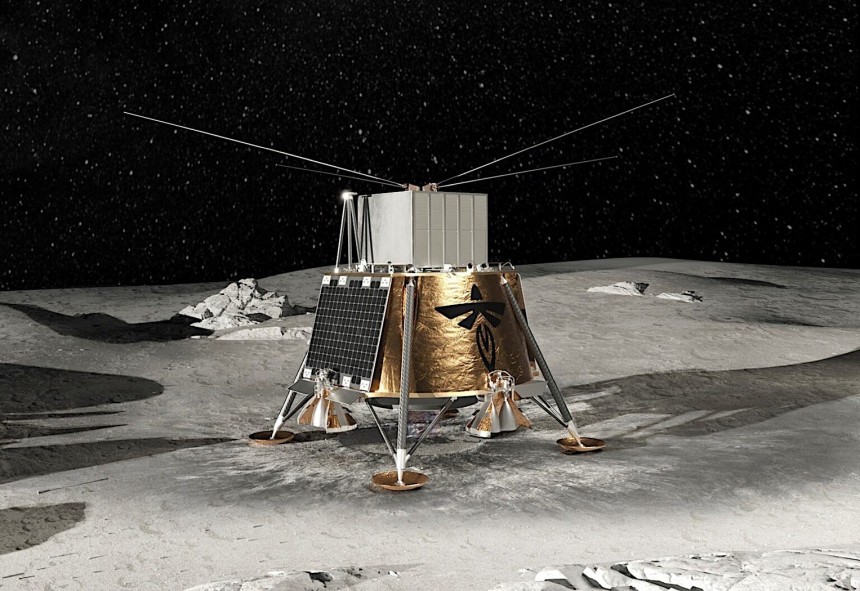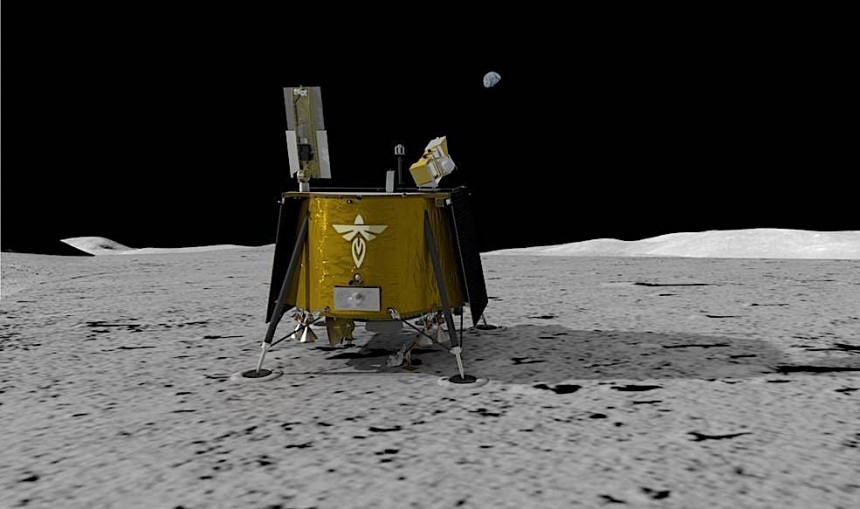Because it never exposes itself to us curious humans here on Earth, the far side of the Moon has always been for our species a constant source of wonder, hopes, dreams, and nightmares. But despite all this, even now, six decades after the start of our space exploration efforts, we’re not any closer to better understanding the place.
Over the coming years, fueled by the Artemis program, several missions are planned to reach that hemisphere of the Moon that always faces away from us. Some of them will probably help us create a better, more comprehensive picture of the place, and who knows what secrets we'll learn in the process. Not all the missions going there over the coming years will be tasked with studying the surface though.
You see, for all its secrets the far side of the Moon has one trait we clearly know it’s there, and might help us a lot in our space quests. Because Earth never gets in the line of sight with it, all the incredible noise we’re making here on our blue marble doesn’t reach that part of the Moon. And that makes it the ideal place to post observation hardware capable of looking back in time to the origins of our Universe and on to distant stars.
Estimates are the Universe is 13.7 billion years old. That’s just how far back in time our eyes and instruments have been able to see, thanks to the light reaching us. Simply put, we now see the most distant stars and other celestial bodies as they were almost 14 billion years ago when the light that now reaches us was generated.
This very long history of the Universe is divided by us humans into five main stages: the very early Universe, the early one, the Dark Ages, the universe as we perceive it now, and the future universe.
The first, second and fifth of these stages are the hardest to grasp and predict, as they either happened in a time before the laws of physics even existed, or have never come to pass. We know the most (yet very little in the grand scheme of things) about the universe as we perceive it today, because, duh, we’re here. That leaves the Dark Ages as one of the most mysterious stages of our huge corner of reality.
This period in the cosmos’ existence is believed to have begun 370,000 – 400,000 years after the Big Bang sparked it into existence. It’s a very important time, as this is just before the first stars and galaxies were born.
Sadly, we have no way of learning anything of value about that period. That is because without stars there is no light for us to see. There are, however, radio waves, the only signal we can measure from that period, but we can’t pick those up from the surface of our planet because of the ionosphere and the constant noise our planet generates.
And this is where the far side of the Moon comes in. With its back to our planet, it’s incredibly quiet, and an instrument sent there will be able to pick up these radio waves from the Dark Ages.
It’s exactly this kind of mission NASA is currently planning. The instrument to be used is called LuSEE-Night, which stands for Lunar Surface Electromagnetics Experiment-Night. It is in essence a collection of deployable antennas and radio receivers that could detect the signals from a time when the Universe had only non-luminous matter.
If successful, the mission will be the first one to detect Dark Ages signals, and could lead to a better understanding of what went on in our cosmos before the first stars appeared roughly 1 billion years after the Big Bang.
This week NASA announced who will deliver the LuSEE-Night to the Moon, and that would be a private contractor Firefly Aerospace – the same company that will deliver the Lunar GNSS Receiver Experiment (LuGRE) to the Moon in 2024, a potential precursor of a future lunar navigation and communication system.
The LuSEE mission will depart in 2026 as per current plans, and it will be accompanied by two other pieces of hardware, also destined to be deployed on the far side of the Moon – a communications and data relay satellite and a User Terminal, both meant to help the LuSEE talk to Earth.
The hardware will reach the lunar surface with the help of Firefly’s Blue Ghost technology. That would be a combo comprising a transfer vehicle capable of carrying 2,700 kg (5,952 pounds) and the lander itself, rated at a payload capacity of 155 kg (342 pounds). All three pieces of hardware to fly in 2026 weigh a combined 494 kg (1,090 pounds).
For the LuSEE mission, NASA will pay Firefly a total of $112 million.
You see, for all its secrets the far side of the Moon has one trait we clearly know it’s there, and might help us a lot in our space quests. Because Earth never gets in the line of sight with it, all the incredible noise we’re making here on our blue marble doesn’t reach that part of the Moon. And that makes it the ideal place to post observation hardware capable of looking back in time to the origins of our Universe and on to distant stars.
Estimates are the Universe is 13.7 billion years old. That’s just how far back in time our eyes and instruments have been able to see, thanks to the light reaching us. Simply put, we now see the most distant stars and other celestial bodies as they were almost 14 billion years ago when the light that now reaches us was generated.
This very long history of the Universe is divided by us humans into five main stages: the very early Universe, the early one, the Dark Ages, the universe as we perceive it now, and the future universe.
The first, second and fifth of these stages are the hardest to grasp and predict, as they either happened in a time before the laws of physics even existed, or have never come to pass. We know the most (yet very little in the grand scheme of things) about the universe as we perceive it today, because, duh, we’re here. That leaves the Dark Ages as one of the most mysterious stages of our huge corner of reality.
Sadly, we have no way of learning anything of value about that period. That is because without stars there is no light for us to see. There are, however, radio waves, the only signal we can measure from that period, but we can’t pick those up from the surface of our planet because of the ionosphere and the constant noise our planet generates.
And this is where the far side of the Moon comes in. With its back to our planet, it’s incredibly quiet, and an instrument sent there will be able to pick up these radio waves from the Dark Ages.
It’s exactly this kind of mission NASA is currently planning. The instrument to be used is called LuSEE-Night, which stands for Lunar Surface Electromagnetics Experiment-Night. It is in essence a collection of deployable antennas and radio receivers that could detect the signals from a time when the Universe had only non-luminous matter.
If successful, the mission will be the first one to detect Dark Ages signals, and could lead to a better understanding of what went on in our cosmos before the first stars appeared roughly 1 billion years after the Big Bang.
The LuSEE mission will depart in 2026 as per current plans, and it will be accompanied by two other pieces of hardware, also destined to be deployed on the far side of the Moon – a communications and data relay satellite and a User Terminal, both meant to help the LuSEE talk to Earth.
The hardware will reach the lunar surface with the help of Firefly’s Blue Ghost technology. That would be a combo comprising a transfer vehicle capable of carrying 2,700 kg (5,952 pounds) and the lander itself, rated at a payload capacity of 155 kg (342 pounds). All three pieces of hardware to fly in 2026 weigh a combined 494 kg (1,090 pounds).
For the LuSEE mission, NASA will pay Firefly a total of $112 million.
